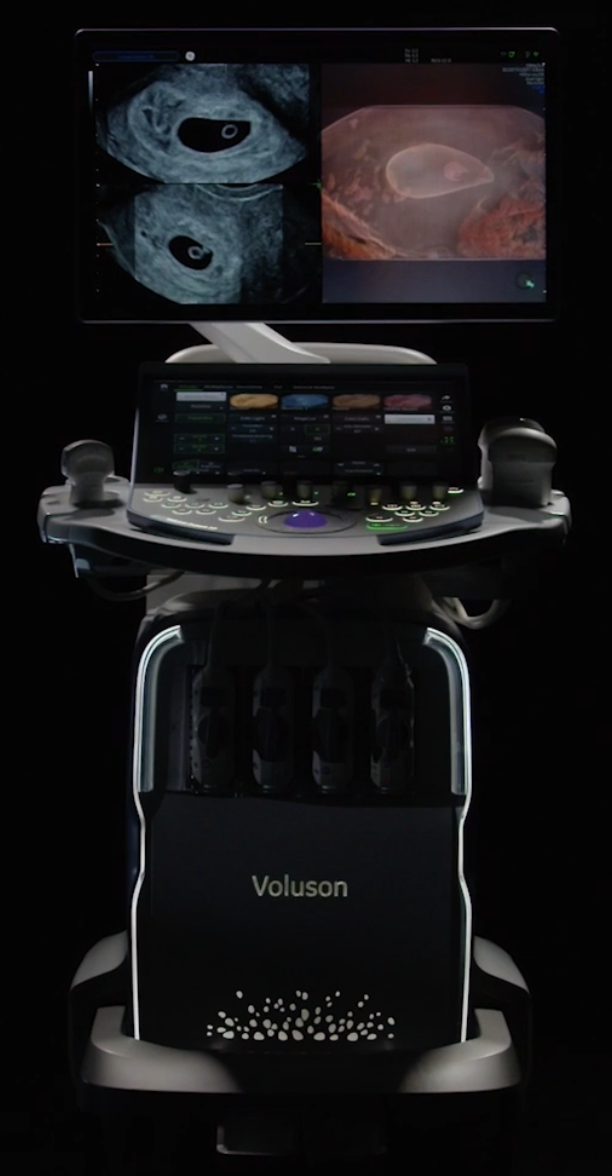GE Launches Premium Ultrasound System for Women’s Health
 GE Healthcare unveiled its next-generation Voluson Expert 22 featuring graphic-based beam former technology, which produces higher quality images and offers greater flexibility in imaging functions and AI powered tools for greater consistency in exams and decreased number of tasks. Customizable touch panels, color and lighting options round out the user experience.
GE Healthcare unveiled its next-generation Voluson Expert 22 featuring graphic-based beam former technology, which produces higher quality images and offers greater flexibility in imaging functions and AI powered tools for greater consistency in exams and decreased number of tasks. Customizable touch panels, color and lighting options round out the user experience.
As pregnancies grow increasingly complex, clinicians are demanding improvements in technology that allow for greater confidence at the point of care. Shrinking workforces are straining healthcare systems around the world, and without intensive training to operate complex medical imaging technology, clinicians are therefore demanding smart, intuitive systems that reduce the burden on individual users.
The Voluson Expert 22’s Lyric Architecture unlocks new imaging and processing power to achieve higher resolution, detailed images—and increased independence from body habitus and other difficult scanning conditions. The Lyric Architecture generates new levels of penetration, resolution, and frame rates to reveal fine anatomy in 2D/3D/4D with ease, and delivers uniformity throughout the image with increased spatial and contrast resolution.
According to Prof Dr Rabih Chaoui, Managing Director at the Center for Prenatal Diagnosis and Human Genetics in Berlin, Germany, said, “The Voluson Expert 22 is a masterpiece of engineering with exceptional 2D images from thin to difficult scanning patients. This machine also has the outstanding ergonomics and is the most customizable system ever produced. It is one of the best ultrasound machines I have ever used.”
Voluson’s modern user interface is simple and seamless, and the 23.8 inch high-definition ultrasound (HDU) display offers 3 image sizes including unique full screen images that allows clinicians to work comfortably and see finer details with ease. Clinicians can personalize the user interface according to their unique preferences and Respond probe activation automatically initializes the probes and presets when removed from the probe holder.
Dr Lawrence Platt, MD, an Obstetrician-gynecologist at the Center for Fetal Medicine in Los Angeles, USA, commented, “By using AI, we are pushing limits and enhancing diagnostic capabilities. At the same time, the functionality makes exams easier. The AI built into this machine is so far advanced compared to what we've seen before, and it’s only a hint. It's our responsibility to push it even further by using it, by challenging it, and showing it, makes a difference.”
According to GE, AI-powered tools include SonoLyst, which helps identify fetal anatomy seen on standard views while enhancing efficiency by up to 65% by adding annotations and measurements. The company also says that SonoPelvicFloor simplifies the exam process by 80%, automating plane alignment and measurements while offering workflow guidance to improve efficiency while eliminating uncertainty. SonoCNS supports consistent measurements and help drive workflow efficiency and reduce exam time by 81%, according to the company, by helping align and display recommended views and measurements of the fetal brain from a 3D Volume.
“Technology continues to move obstetrics and gynecology forward, but there is a delicate balance between using technology to enhance medical care and the human role in medicine,” said Gerald Seifriedsberger, General Manager-Women’s Health. “We are incredibly proud to build on our legacy of innovation in women’s health with the introduction of the Voluson Expert 22, and deliver advanced ultrasound imaging at the point of care that allows for more shared decision-making between clinician and patient.